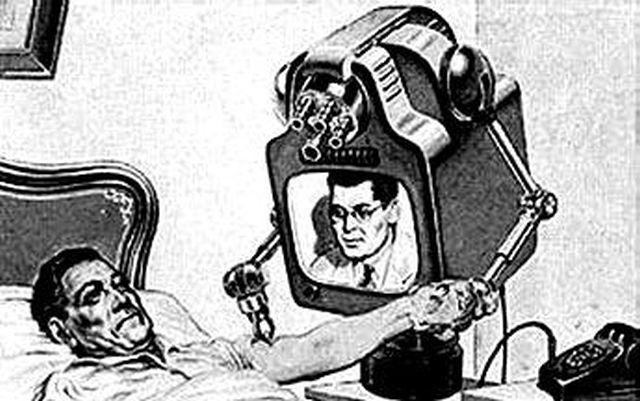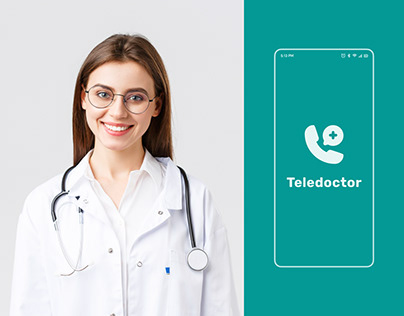Teledoctors: Connecting the Void In Between Patients and Medical Care Suppliers
The emergence of teledoctors stands for a substantial change in the health care landscape, using remedies to long-standing access issues encountered by clients and providers alike. By integrating telemedicine right into conventional practices, medical care systems can reach remote and underserved populations, providing crucial clinical examinations without the barriers of range and traveling. This standard change not only enhances patient engagement but also optimizes resource allocation for carriers. However, the extensive adoption of teledoctors elevates important inquiries about the sustainability of such techniques and the effects for future healthcare shipment. What obstacles lie ahead in ensuring this version's effectiveness and equity?
Increase of Telemedicine

The surge of telemedicine is additionally fueled by the requirement for affordable healthcare. Medical care systems globally are under pressure to reduce expenses while keeping top quality care, and telemedicine offers a feasible remedy. By decreasing the demand for physical visits, telemedicine decreases overhanging prices for medical care facilities and eventually decreases the monetary concern on patients.
In Addition, the COVID-19 pandemic worked as a catalyst, speeding up the adoption of telemedicine methods. Social distancing procedures and the demand to lessen direct exposure risk necessitated a change in the direction of remote examinations, motivating regulative bodies to adapt and support telehealth solutions. This change has not just tried and tested telemedicine's efficacy yet also its prospective to evolve as a staple component of contemporary medical care systems.
Benefits for Clients
Largely, telemedicine enhances availability, allowing clients in underserved or remote locations to speak with health care providers without the requirement for substantial traveling. Telemedicine also supplies people the ease of getting clinical guidance and therapy from the convenience of their homes, minimizing the time and price associated with traveling to a health care center.
Additionally, telemedicine sustains continuity of care by promoting routine follow-ups and tracking, which are critical for handling chronic conditions. Patients can easily schedule appointments and gain access to medical care solutions outside standard workplace hours, fitting their busy lifestyles. This adaptability causes enhanced client engagement and adherence to therapy strategies, potentially resulting in far better health and wellness outcomes.
Additionally, telemedicine can aid alleviate the danger of infection transmission, a concern enhanced by the COVID-19 pandemic. By lessening the need for in-person visits, people can prevent crowded waiting areas and minimize exposure to transmittable diseases. Inevitably, telemedicine equips patients by supplying timely, reliable, and customized medical care services.
Benefits for Carriers
For medical care service providers, telemedicine offers significant benefits that improve the efficiency and reach of their method. By leveraging electronic innovation, service providers can expand their services to a wider group, including those in underserved or browse around here remote areas. This not only alleviates geographical barriers yet also enhances person retention and acquisition by making health care more easily accessible.
With telemedicine, the need for physical space decreases, enabling suppliers to conserve on actual estate and functional expenditures. This adaptability can lead to increased patient consultations per day, thereby boosting revenue potential.
Telemedicine also fosters a more collaborative environment for medical care providers. teledoctors. It enables smooth sharing of person details amongst experts, enhancing diagnostic accuracy and treatment outcomes. Furthermore, electronic platforms can integrate with electronic health records (EHRs), enhancing data precision and enhancing management jobs
Moreover, telemedicine boosts patient fulfillment, which is critical for provider online reputation and success. By supplying convenient and timely treatment, companies can enhance person loyalty and engagement, better enhancing the provider-patient relationship.
Conquering Difficulties
While telemedicine supplies various benefits for health care carriers, it likewise offers challenges that need mindful consideration. Health care carriers must adhere to rigid regulations like HIPAA to safeguard delicate details, thereby requiring financial investment in safe and secure platforms and continuous team training. teledoctors.
Another challenge is the electronic divide, which can prevent accessibility to telemedicine services. Not all individuals have equivalent access to click to find out more the needed technology or internet connectivity, specifically those in underserved or country locations. This variation can intensify existing medical care inequalities, making it important for providers to explore alternative solutions, such as partnerships with area companies, to link this space.
Moreover, there are restrictions in carrying out health examinations remotely. Certain problems need in-person evaluation, highlighting the need for a hybrid version that incorporates telemedicine with standard check outs. When telemedicine is ideal and ensuring smooth shifts between in-person and online treatment., carriers need to navigate these obstacles by establishing methods to determine.
Future of Healthcare
The future of healthcare is positioned for a transformative evolution, driven by the rapid combination of technology and advancement. This not only improves person comfort but likewise expands access to medical care, particularly in country and underserved areas.
Man-made knowledge (AI) and artificial intelligence are likewise established to play critical functions. These modern technologies can analyze huge quantities of data, supplying anticipating insights into individual wellness, improving diagnostic accuracy, and customizing therapy plans. AI-driven tools can augment doctor' abilities, resulting in even more enlightened decision-making and far better patient outcomes.
Additionally, wearable modern technology and Web of Clinical Points (IoMT) devices are changing client involvement and proactive wellness management. These gadgets make it possible for continuous health and wellness surveillance, enabling very early detection of prospective concerns and timely treatments.
As these technologies proceed to advance, they promise to produce a much more reliable, accessible, and patient-centric health care system, eventually linking the gap between clients and doctor. - teledoctors
Final Thought
Teledoctors are changing medical care by dramatically boosting access and performance through remote assessments. This development supports patients in underserved areas by providing timely medical advice without calling for physical visits, thus improving person involvement and connection of treatment. Doctor profit from more efficient time management and enhanced collaboration possibilities. Despite obstacles such as technical barriers and regulative problems, the future of medical care shows up effective and increasingly comprehensive due to the assimilation of telemedicine right into traditional treatment models.

As telemedicine continues to Check Out Your URL improve health care distribution, individuals stand to gain substantially from this transformation. Mostly, telemedicine enhances availability, allowing individuals in underserved or remote areas to seek advice from healthcare suppliers without the need for comprehensive traveling. Telemedicine also uses people the convenience of getting clinical advice and treatment from the convenience of their homes, reducing the time and cost connected with taking a trip to a healthcare facility.
Eventually, telemedicine empowers clients by supplying prompt, reliable, and personalized healthcare services.
Comments on “How Teledoctors Are Changing Modern Medical Care”